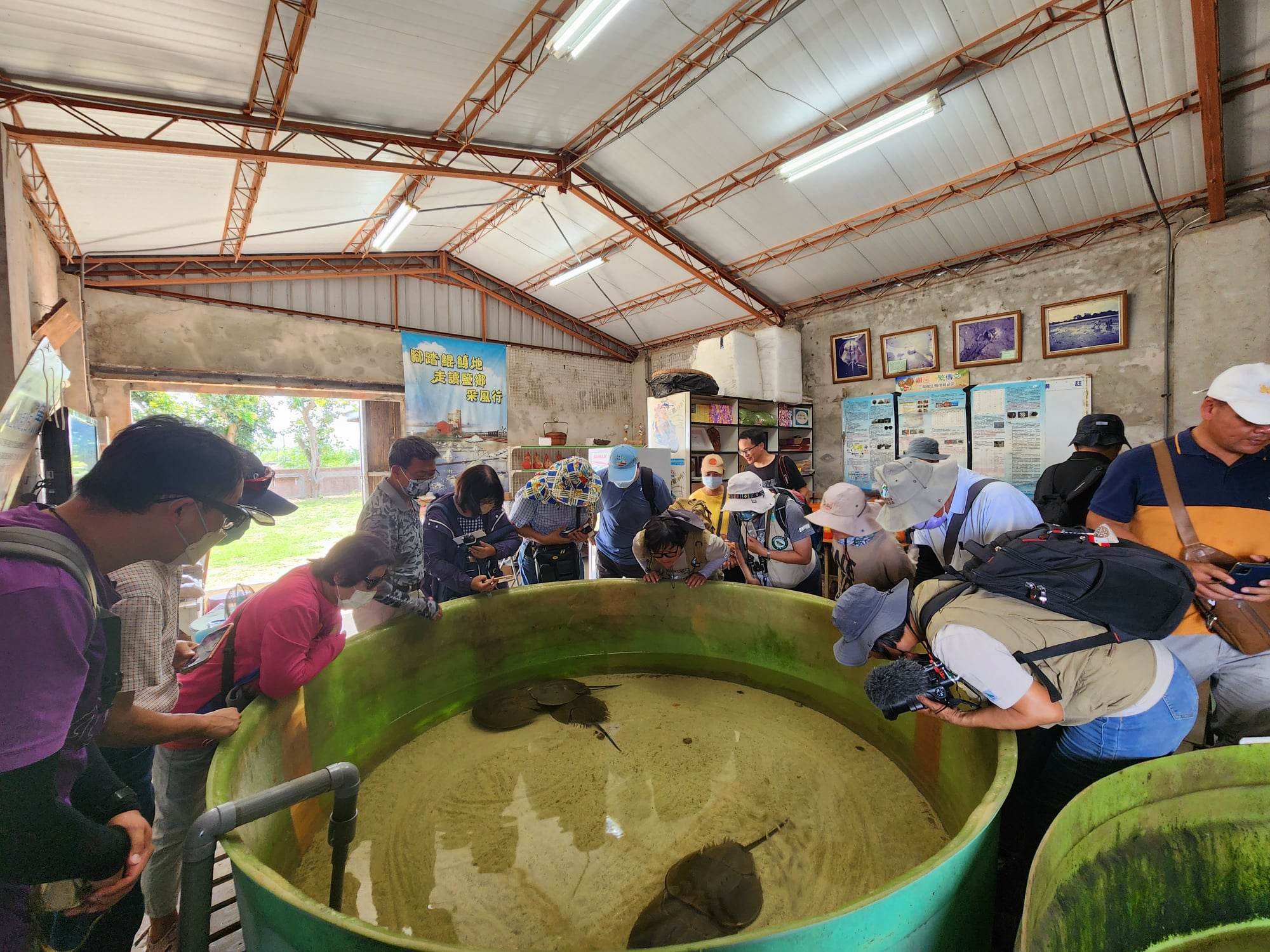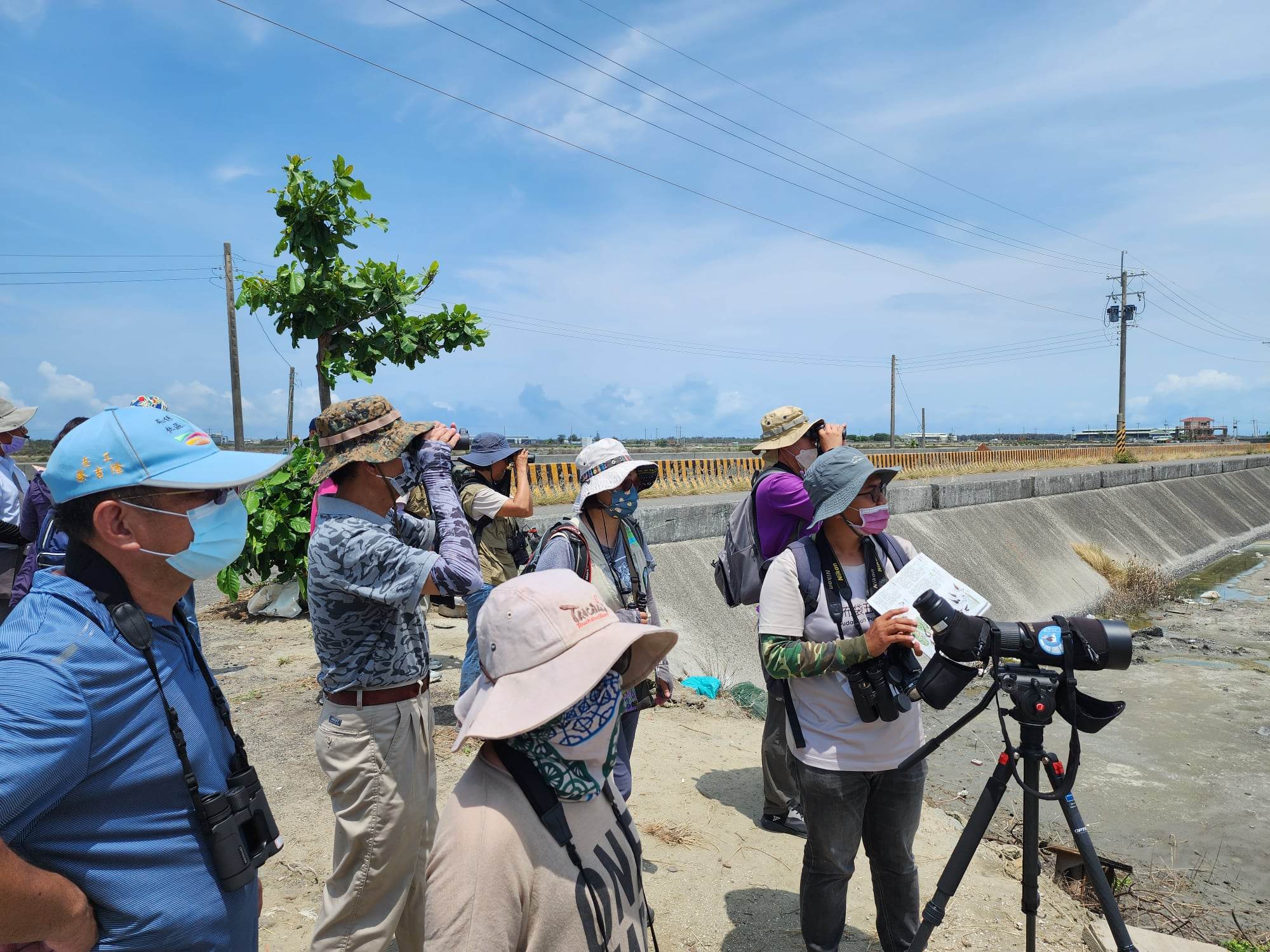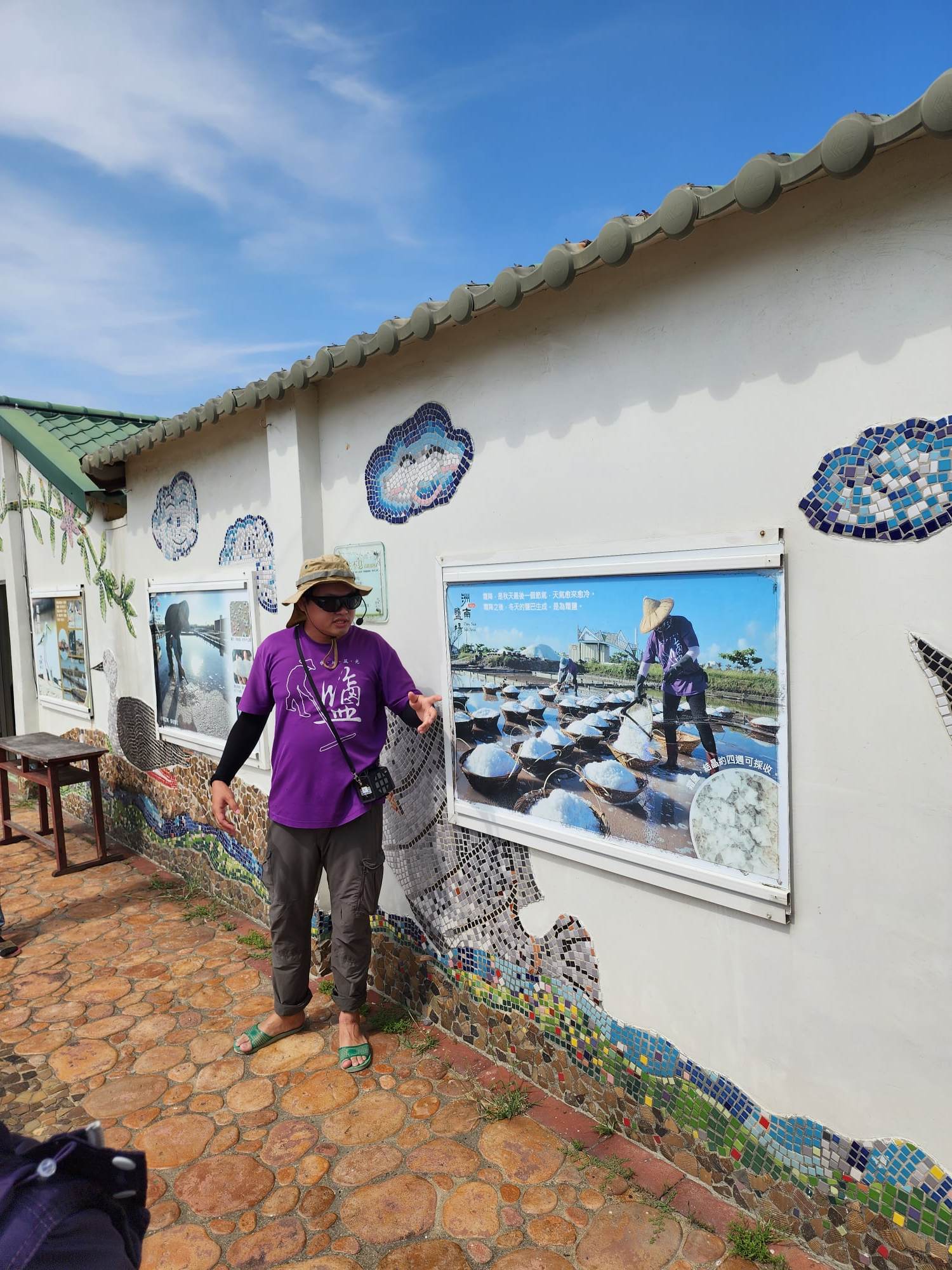Developing Community Collaboration and Ecotourism at Budai Salt Pan Wetlands
By Scott Pursner
For migratory birds that winter in Taiwan, the Budai Salt Pan Wetlands in Chiayi County are one of the most critical habitat areas in the country. Each winter over 40,000 birds will stay there, from more common species such as the Pacific Golden Plover to globally threatened species like the Black-faced Spoonbill. The international importance of the site led the Kaohsiung Wild Bird Society to adopt land there beginning in 2019, saving it from potential development.
The 343 ha of adopted salt pan wetlands does not exist outside the realm of people though, and it borders many small farming and aquaculturist communities. Thus, relationship building is important for both all parties involved. One area currently being developed is ecotourism which can highlight both conservation efforts and local culture and agricultural products. On May 22, 2023 the Kaohsiung Wild Bird Society in collaboration with a number of local business hosted a pilot version of the Little Happiness Trip. The group's Budai Salt Pan Wetlands team hosted the day-long event and invited representatives from media, NGOs, and local government to get their feedback.
 Exploring the Horseshoe Crab Conservation Center
Exploring the Horseshoe Crab Conservation Center
The first stop on the trip was to visit the Horseshoe Crab Conservation Center managed by the Chiayi County Ecological Conservation Association. In operation since 2012, the center is hub where horseshoe crabs accidentally caught by local fishers can be taken and rehabilitated. It is one of only two centers of its kind in all of Taiwan proper, the other being located at the National Museum of Marine Science and Technology in Keelung City. The Budai center cares for horseshoe crabs found in central and southern Taiwan and also helps with facilitating breeding. During the tour, led by CECA Executive Secretary Su Yin-tien, participants learned about the ancient animal and its conservation needs. He also talked about local superstitions regarding it. Fishers believe that if a you catch and kill a male horseshoe crab, you'd would have bad fishing for three years and for a female even longer. So local fishers are eager to bring the prehistoric animals to the center to ensure good fishing.
 Birdwatching at Budai Salt Pan Wetlands
Birdwatching at Budai Salt Pan Wetlands
After that, the guests went to the second location for birdwatching at the Budai Salt Pan Wetlands. The group was able to see foraging Sharp-tailed Sandpipers as well as nesting Kentish Plovers and even some Gull-Billed Terns. Most surprising though was a small group of Black-faced Spoonbills which had not yet migrated north. The volunteers from the BSPW team shared ecological and historical information about the site as well as what birds are common there at different parts of the year. They also explained the scientific work being done there such as nest surveys for species like Kentish Plover and Black-winged Stilt. This information is important to local decision makers, conservationists, and companies looking to develop in the area.
Next, the group was able to sample some delicious local food at the Beautiful Boathouse. Run by the Land of Beauty Fishery and Farm Goods, the restaurant features Budai caught or raised fish and seafood products such as milkfish and clams. Once done eating, guests were free to explore the restaurant, which had a number of 3D paintings and murals created by a local artist.
Participants then headed to the Budai Area's only active salt field to learn about the local traditions and cultural practices surrounding salt cultivation. The Zhou Nan Salt Field was initially founded in 1824 and stayed in operations until 2001. Seven years later, in 2008, it reopened with the purpose of salt cultivation and teaching others about the practice. During the visit, participants learned about the importance of salt to the area as well as how Taiwanese food and culture were impacted by the salt industry. They even got to explore the fields themselves to see the process of harvesting salt for themselves.
 Learning about the history of Taiwan's salt industry
Learning about the history of Taiwan's salt industry
Once the day's activities had finished, a discussion was held so people could share their thoughts and feelings towards the schedule and offer suggestions for how to improve the experience. It is hoped that more activities and trips can be developed at Budai to allow people to learn more about the area, its history and culture, as well as the important ecological role that it plays.
Cover:
Participants get their feet wet at the Zhou Nan Salt Field
